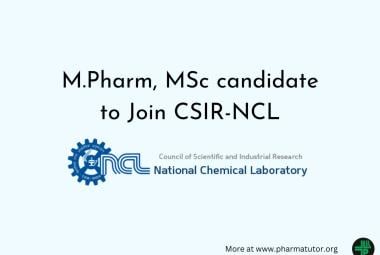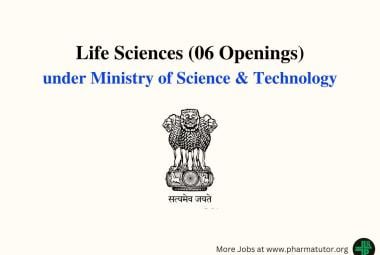{ DOWNLOAD AS PDF }
ABOUT AUTHORS:
Tribhuvan Patel*, Virendra Kr. Baheliya, Rajesh Kr. Prajapati, Vivek Kr. Yadav, Avanish Kr. Yadav, Pramod Kr. Jaiswal
Department of Pharmaceutical Sciences,
Kunwar Haribansh Singh College of Pharmacy, Jaunpur, U.P.
*vikashk464@gmail.com
ABSTRACT
Antacids are chemical substances which neutralizing the acid that causes heartburn. By reducing the acidity, the acid is less able to irritate the esophagus. The effect of antacids on the stomach is due to partial neutralisation of gastric hydrochloric acid and inhibition of the proteolytic enzyme, pepsin. There are commonly used self-prescribed medications. Antacids are available many forms such as suspensions, chewable tablets and liquid gels. They consist of calcium carbonate and magnesium and aluminum salts in various compounds or combinations. Antacids are used for gastric and duodenal ulcers, gastro-oesophageal reflux disease, stress gastritis, pancreatic insufficiency, non-ulcer dyspepsia, biliary reflux, bile acid mediated diarrhoea, constipation, osteoporosis, urinary alkalinisation and chronic renal failure as a dietary phosphate binder.
REFERENCE ID: PHARMATUTOR-ART-2265
INTRODUCTION
These are drug which are usually substances and used for neutralizing excess acid in the stomach of patient suffering from hyper-chlorhydria (hyperacidity). These drugs give symptomatic relief of pain due to hyperchlorhydria. [1]
Antacids are the substances which reduce gastric acidity resulting in an increase in the pH of stomach and duodenum. Gastric acidity occurs due to excessive secretion of HCl in stomach due to various reasons. [2]
- Gastritis (A general inflammation of gastric mucosa)
- Peptic ulcer or oesophageal ulcer (Lower end of oesophagus)
- Duodenum ulcer
- Gastric ulcer (Stomach)
Antacid do not decrease acid production. If antacids are water soluble they may be able to produce systemic alkalosis due to that of absorbable ions disturbing acid-base balance of body fluids. Except Sodium Bicarbonate, most of antacids are water soluble. Antacid act on gastrointestinal tract after being converted in to soluble salt by hydrochloric acid. [1]
The potency of an antacid is generally expressed in terms of its acid neutralizing capacity (ANC). Acid neutralizing capacity is defined as number of mEq of 1N HCl that are brought to pH 3.5 in 15 min (or 60 min in some tests) by a unit dose of the antacids. [2]
Antacids are the oldest effective medications for peptic ulcers and heartburn. Chalk (calcium carbonate) has been chewed for centuries to ease dyspepsia and is still popular. Indeed, before the arrival of the first H2 antagonist in the 1970, antacids were the only useful drugs available for these conditions. Most commercially available antacids are combinations of aluminium and magnesium hydroxide. Some effervescent antacids contain sodium bicarbonate, that old household remedy for tummy aches known as “baking soda”. Some antacids are combined with an alginate [an insoluble substance that increases surface tension in liquid] to form a compound that floats on gastric fluids to protect the oesophagus from acid exposure. Antacid tablets are slow acting and have less neutralizing power than the equivalent liquid preparation. Tablets must be chewed, and may not interact well with gastric acid. [3]
Antacids therapy
Antacids are alkaline bases used to neutralize the excess gastric HCl associated with gastritis or peptic ulcer. Since gastric HCl secretion is continuous, so is the administration of antacids.[4]
Role of antacids
- Primarily in pain relief.
- Higher doses given continuously can promote ulcer.
- Superior to H2 blockers in bleeding peptic ulcer.
- The antacid should probably inhibit pepsin, the protiolytic enzyme.[5]
Criteria for antacids
- The antacid should not be absorber/or cause systemic alkalosis.
- It should not be constipative or laxative.
- It should exert effect rapidly and over a long period.
- The antacid should buffers in the range of pH 4-6.
- Reaction of antacid with HCl should not cause large evolution of gas.
- It should be insoluble in water and has fin particle form.
- It should be able to exert its effect gradually and over a long period of time.
- It should be stable and readily available.
- The reaction between antacid and gastric HCl should not produce large volume of Gas.[6]
CLASSIFICATION OF ANTACID
(a) Systemic (Absorbable) antacid
These are soluble, readily absorbable and capable of producing systemic electrolytic alteration and alkalosis. Ex- Sodium Bicarbonate, Sodium citrate.
(b) Non systemic (Non absorbable) antacids
These are not absorbed to a significant extend thus do not exert on appreciable systemic effect. This group is further sub divided in to following:
I. Aluminium containing antacids
Ex- Aluminium hydroxide, Aluminium phosphate, Dihydroxy aluminium amino acetate, Dihydroxy aluminium sodium carbonate, Basic aluminium carbonate.
II. Calcium containing antacids
Ex- Calcium Carbonate, Tribasic calcium phosphate.
III. Magnesium containing antacids
Ex-Magnesium carbonate, Magnesium citrate, Magnesium hydroxide, Magnesium oxide, Magnesium phosphate.
IV. Combination antacid preparation
Aluminium hydroxide gel and Magnesium hydroxide gel and Magnesium trisilicate, Magaldrate (monoalium hydrate, Hydrated Magnesium aluminate), Simethicone (defoaming agent) containing antacids. [1]
ANTACID COMBINATIONS
A combination of two or more antacids is frequently used. These may be superior to any single agent on the following accounts.
a) Fast (Magnesium hydroxide) and slow (Aluminium hydroxide) acting component yield prompt as well as sustained effect.
b) Magnesium salts are laxative, while Alum salts are constipating combination May annul each others. Action and bowel movement may be least affected.
c) Gastric emptying is least affected. While alum-salts tend to delay it
Magnesium/Calcium, salts tend to hasten it. [2]
EVALUATION OF ANTACIDS
In order to evaluate antacid activity acid-neutralizing can be used. It is an In-vitro test in which a known quantity of an antacid is added to the given amount of HCl and then pH of this acid is measured at different time intervals for determining amount of acid consumed by the sample. [1]
MECHANISM OF ACTION
The mechanism of action of antacids is complex. A proposed mechanism is the prevention of back-diffusion of Hydrogen ions across the GI mucosa. Fifty % of the acid in a given amount of gastric juice with a pH of 1.3 can be neutralized by raising the pH to 1.6. 90% by raising the pH to 2.3 and 99% by raising the pH to 3.3. It generally is accepted that raising the gastric pH to approximately 4 prevent stress ulcer. This is thought to be medicated by acid back diffusion. [5]
Another action of antacids is to prevent the conversion of gastric pepsinogen to pepsin, pepsinogens are inactivated irreversibly at pH5 and inactivated at pH 7. It thus may be necessary to raise the pH to 5 to achieve the maximum benefit from antacids.
Antacids give there therapeutic action by inactivating bile salts. Which are through to reflux from the duodenum into the stomach and play some role in acid peptic disease. [6]
TABLE 1: GENERAL COMPOUNDS USE AS ANTACIDS
|
Antacid |
Formula |
Neutralizing Power |
Unwanted Effects |
|
Sodium Bicarbonate |
NaHCO3 |
Low |
Fluid retention, Alkalosis |
|
Magnesium Hydroxide |
Mg(OH)2 |
High |
Diarrhoea, Magnesium toxicity |
|
Aluminium Hydroxide |
Al(OH)3 |
Modest |
Constipation, Drug or phosphate binding (inhibits absorption) |
|
Calcium Carbonate |
CaCO3 |
Very high |
Acid rebound |
ANTACID COMPONENTS
1. Sodium compounds
a) Sodium Bicarbonate
Formula: NaHCO3
It contains not less than 99% and not more than the equivalent of 100.5 % of NaHCO3 calculated with reference to the dried substance. [1]
Properties: Sodium bicarbonate is a weak, short-acting antacid. While generally a safe household remedy, its high sodium content is a disadvantage. Unlikely to be recommended by doctors, Bicarbonate has an effervescent property that explains the commercial survival of Antacid/pain-killer combinations such as Alka-Seltzer™ and Bromo-Seltzer™. [3] Bicarbonate reacts with stomach hydrochloric acid to release carbon dioxide gas (CO2) that is quickly absorbed. An imbalance of the body’s normal pH level (Systemic alkalosis) can result from overuse of bicarbonate that is doubly harmful if chloride or potassium is depleted through vomiting or diuretic therapy. Those who require sodium restriction for high blood pressure or heart disease should avoid bicarbonate. It is freely soluble in water but partially soluble in alcohol. Its solution is alkaline in nature. [7]
2. MAGNESIUM COMPOUNDS
a) Magnesium Hydroxide
Formula: [Mg(OH)2]
It contains not less than 95.0% and not more than 100.5% of [Mg(OH)2]. [1]
Properties: It is a fine amorphous powder magnesium hydroxide is not absorbed by the intestine. However, its interaction with hydrochloric acid produces magnesium chloride that can be absorbed. Magnesium has many functions in human cells, including the heart, and may have harmful effects if levels in the blood rise it is almost insoluble in water yielding a solution which is slightly alkaline[1]. It slowly absorbs carbon dioxide from environment. Magnesium hydroxide is best known as milk of magnesia. Like magnesium citrate or magnesium sulphate, it is an effective laxative. [6] were it not for its tendency to cause diarrhoea, magnesium hydroxide would be the most ideal antacid. To counter the diarrhoea effect, most manufacturers add aluminium hydroxide, which is constipating. The combination substantially raises the price, and the addition of the less-effective aluminium hydroxide reduces the antacid benefit. Magnesium should be avoided if renal failure is present. [4]
b) Magnesium oxide
Formula: MgO
It contains not less than 98.0% of MgO calculated with reference to the substance ignited at 900oC. [1]
Properties: Both heavy and light magnesium oxide is odourless taste slightly alkaline, practically insoluble in water yield a solution which is alkaline. It readily dissolves in dilute acids with slight effervescence. In presence of acid, the oxide forms the magnesium hydroxide, therefore the chemistry and pharmacology are same as those of magnesium hydroxide. [8] It is ingredient of universal antidote along with tannic acid and charcoal. It is used for compounding and preserving fluid extract because of its absorptive power. [5]
3. ALUMINIUM COMPOUNDS
Aluminium hydroxide gel
It is an aqueous white viscous suspension of hydrated aluminium oxide having amounts of basic aluminium carbonate. The preparation contains not less than 3.5% and not more than 4.4 % w/w of aluminium oxide (Al3O3). [1]
Properties: Compared to magnesium hydroxide, aluminium hydroxide is a weak, slow-acting antacid, and its acid-neutralizing effect varies among commercial products. Aluminium may protect the stomach lining from the damaging effects of alcohol and other irritants. Aluminium hydroxide inactivates the gastric digestive enzyme pepsin. However, the principal reason for its inclusion in commercial antacid preparations is to counteract the diarrhoea effect of magnesium. [9]
Aluminium hydroxide may alter the absorption of certain drugs [including some used to treat cardiac disease or high blood pressure] so they should not be taken simultaneously. A very small amount of aluminium is absorbed, and brain damage might occur with its long-term use in the treatment of kidney failure. [6] It is widely uses in the treatment of intestinal toxaemia and hyperchlorhydria. It is able to neutralise gastric HCl and causes absorption of toxins, and gases. [8]
4. CALCIUM COMPOUNDS
Calcium Carbonate
Formula: CaCO3
It was having not less than 98.0% and not more than 100.5% of CaCO3.which is calculated with reference to the sample dried at 105oC. [1]
Properties: It occurs as a white, odourless tasteless microcrystalline powder which is stable in air. It exists in two crystal form and both are of commercial importance, one Aragonite and other is Calcite. Calcium Carbonate (Chalk) is the most potent usable antacid. It can achieve an gastric pH of 9 (alkaline). Nonetheless, it is not always the best choice for regular use. About one-third of the administered calcium is absorbed and high blood calcium or calcium-containing kidney stones are slight risks. Phosphate bound by calcium in the gut or bone may deplete the serum phosphorus in some kidney failure patients. [2]
It may also supplement the diet for pregnancy and lactation, and prevent or treat certain metabolic bone diseases (e.g. osteoporosis). When these requirements coexist with the need for an antacid, calcium carbonate is doubly useful. [10]
5. ADDITIONAL COMPONENTS
a) Peppermint flavouring: Peppermint is the most common antacid flavouring. By relaxing the lower oesophageal sphincter to release gas, peppermint encourages the release of a belch after a meal. Hence the popularity of after-dinner mints. However, the same activity may perversely encourage reflux. There are probably insufficient quantities of peppermint in antacid preparations to have much clinical effect. [4]
b) Antiflatulents: Simethicone is a surfactant, which presumably by breaking down bubbles within the gut renders gas available for absorption. Despite the lack of evidence of effectiveness, simethicone is included in some popular antacid preparations, thereby increasing their cost. [4]
c) Alginic acid: Prepared from kelp (seaweed), alginate acts as a physical acid barrier for the oesophagus in gastroesophageal reflux. It is not an antacid. When ingested, this tasteless and apparently harmless substance floats on gastric fluid to prevent the reflux of acid and pepsin into the oesophagus. [4]
APPLICATIONS
- Some preparation use as skin protectors.
- Antacid are used widely for the relief of heart burn.
- Use in dyspepsia.
- As well as large variety of nonspecific GI symptoms.
- The primary role of antacids in the management of acid peptic disorder in relief of pain.
- Antacids usually one used in combinations.
- It is used as antacid, and in electrolyte replacement.
- Aluminium hydroxide is used as antacid in the management of peptic ulcer, gastritis, gastric hyperacidity. It is also used as skin protectant and mild astringent. [6]
DRUG INTRACTIONS
By raising gastric pH and by forming complexes the non-absorbable antacids-decrease the absorption of many drugs. Especially Tetracyclines, iron salts, Fluoroquinolons, Ketoconazole, H2 blockers, Diazepam, Phenanthiazines, and Nitrofurantion stagger. This administration by 2 hours. The efficacy of nitrofurantion is also reduced by alkalinisation of urine. [8]
Gastroesophageal reflux: Antacids afford faster symptom relief than drug which inhibit acid secretion, but do not provide sustained benefit, may be used off and on for acid eructation and heartburn. [11]
Side effects of long term antacid therapy
a) If pH raises too high rebound acidity to neutralize.
b) Antacids which absorbed systemically ezert alkaline effect on body’s buffer system.
c) Somme antacids cause constipation while others have laxative effect.
d) Sodium containing antacids are problem for patients on sodium restricted diet. [6]
CONCLUSION
Antacids are obsolete for the primary treatment of peptic ulcer. Nonetheless, they seem to help many of those with bloating. The most important indication today is heartburn. Magnesium hydroxide is effective for this, but because of its laxative effect, most commercial preparations combine it with aluminium hydroxide. By reducing gastric acidity (raising the intragastric pH), antacids inactivate pepsin and relieve symptoms. Antacids by themselves, or combined with alginate are very helpful for the relief of heartburn, but are ineffective for the treatment of esophagitis and other complications of GERD.
REFERENCES
1. G.R. Chatwal: Pharmaceutical chemistry inorganic. Himalaya publishing house, Delhi, 2009.
2. K.D.Tripathi: Essential of medical pharmacology. Jaypee brothers medical publishers, New delhi, 2013.
3. W.G. Thompson: The Ulcer Story. Perseus Books, 1996.
4. J.E. Richter; Unresolved issues in gastroesophageal reflux related ear, nose and throat problems; American Journal of Gastroenterology; 1999; 94; 2812-17.
5. Goodman & Gilman: The pharmacological bases of Therapeutics. Pergamon press, 2010.
6. Rxemington. The science and practice of pharmacy. B. J. Publications, 2005.
7. M. P. Rang, M. M. Dale and J. M. Riter: Pharmacology. Churchill Livingtone, 2010.
8. Satoskar R. S., Nirmala N. Rege and S. D. Bhandarkar: Pharmacology and pharmacotherapeutics. Popular prakashan, 2012.
9. Singh S.; Khajuria A.; Taneja S.C.; Khajuria R.K.; Singh J.; Johri R.K. and Qazi G.N.; The gastric ulcer protective effect of boswellic acids, a leukotriene inhibitor from Boswellia serrata, in rats; Phytomedicine; 2008; 15(6-7); 408-15.
10. Kupcinskas L.; Lafolie P.; Lignell A.; Kiudelis G.; Jonaitis L.; Adamonis K.; Andersen L.P. and Wadstrom T.; Efficacy of the natural antioxidant astaxanthin in the treatment of functional dyspepsia in patients with or without Helicobacter pylori infection: A prospective, randomized, double blind, and placebo-controlled study; Phytomedicine; 2008; 15(6-7); 391-9.
11. Pereira Rde S. and J. Pineal Res.; Regression of gastroesophageal reflux disease symptoms using dietary supplementation with melatonin, vitamins and aminoacids: comparison with omeprazole; 2006; 41(3); 195-200.
|
PharmaTutor (ISSN: 2347 - 7881) Volume 2, Issue 11 Received On: 23/08/2014; Accepted On: 28/08/2014; Published On: 01/11/2014How to cite this article: T Patel, VK Baheliya, RK Prajapati, VK Yadav, AK Yadav, PK Jaiswal; Antacids: Heart Burn OTC Drugs; PharmaTutor; 2014; 2(11); 16-21 |
NOW YOU CAN ALSO PUBLISH YOUR ARTICLE ONLINE.
SUBMIT YOUR ARTICLE/PROJECT AT articles@pharmatutor.org
Subscribe to Pharmatutor Alerts by Email
FIND OUT MORE ARTICLES AT OUR DATABASE









